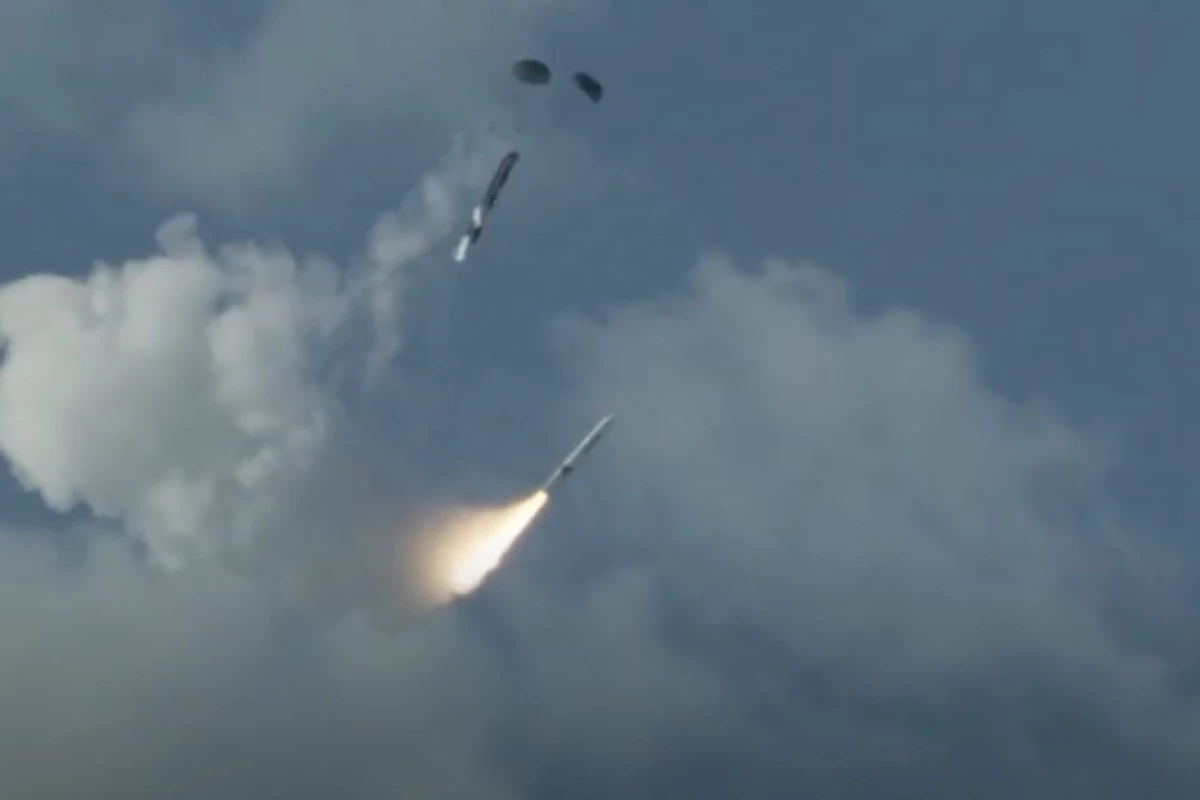In a major defense milestone, the US Navy Arleigh Burke-class guided missile destroyer USS Pinckney (DDG-91) has successfully completed a simulated engagement with a live hypersonic missile in the waters off the Hawaiian Islands.
The March 24 test, also known as FTX-40, took place off the coast of the Pacific Missile Range Facility on the island of Kauai. A joint operation by the Navy, the Missile Defense Agency, Lockheed Martin, and industry partners, it involved a C-17 Globemaster III jet transport carrying a Medium-Range Ballistic Missile (MRBM) equipped with a Hypersonic Target Vehicle-1 (HTV-1) in a drop canister. Parachuted from the plane, the missile was released and a rocket stage boosted the hypersonic vehicle to a high enough altitude that it reached speeds well in excess of Mach 5 while gliding down.
Meanwhile, USS Pinckney was tasked with conducting an intercept, albeit a simulated one involving the launch of a virtual Standard Missile-6. This is the sharp end of the Aegis Combat System that was used to detect, track, and simulate engagement of the hypersonic target.
Using a digital missile to intercept a real, live missile may seem a bit daft, but there's a serious logic to it. Tests like this are intended to answer very specific questions and that means keeping a very tight control of the exercise by removing as many variables as possible. In this case, it was to demonstrate the ability of the Aegis system to find the missile, track it, and give the order to launch.
However, an actual launch would simply have complicated things while wasting the American taxpayer US$4.3 million for a missile that does not come cheap. That will be saved for future live-fire tests that will be based on the results of Stellar Banshee.
The Navy is particularly keen on this latest test because it shows off the remarkable ability of the Aegis system to evolve to handle missions as a matter of course that would stretch other systems to their limits.

First deployed in the 1970s, Aegis is currently installed in 110 ships across seven navies, with another 71 ships planned. Over its half-century career, Aegis has been constantly upgraded and has shown surprisingly advanced capabilities as a ballistic missile defense. For example, after China caused an international flap by testing an anti-satellite weapon in 2007, the US almost casually replied a few months later when an unmodified Aegis system aboard the cruiser Lake Erie (CG-70) destroyed a disabled US satellite so the fragments would burn up harmlessly in the Earth's atmosphere.
The latest tests are part of a project to upgrade Aegis against hypersonic threats using Standard Missile-6 (SM-6) and Standard Missile-3 (SM-3) interceptors. This will require installing the more advanced SPY-6 radar to handle objects moving in excess of Mach 5 as well as optimizing the Standard Missiles for interceptions both outside and inside the atmosphere.
"Our Aegis Combat System successfully defended against a simulated hypersonic threat," said Chandra Marshall, vice president of Multi-Domain Combat Solutions at Lockheed Martin. "Aegis Baseline 9’s hypersonic defense advantage against a MRBM target brings incredible capability that allows our war fighters to see the unseen, sooner, ensuring our sailors get in front of threats quickly."
Source: Lockheed Martin






